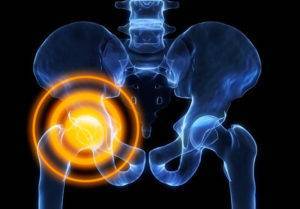Osteoporosis is a chronic progressive disease of the skeleton, which is manifested by a decrease in bone density that reduces bone strength and increases the risk of fracture.
Can be a separate disease or a syndrome that can occur in other pathologies.
To date, 35% of all women and 20% of men who were victims of the fractures, suffered not identified before osteoporosis. And often such people have a hip fracture.
Feature system osteoporosis – it can occur on a variety of factors, among which in the first place are:
- The presence of osteoporosis in relatives.
- His advanced age.
- Female.
- Weight less than 60 kg.
- Fragile.
- Intolerance to dairy products.
- Hormonal disturbances.
- Periods of amenorrhea.
- Infertility.
- Weakness.
- Smoking.
- Alcoholism.
In addition, one of the factors of the development can be long taking certain types of medications – corticosteroids, anticoagulants, cytostatics, antibiotics of tetracycline group.

The clinical picture
Symptoms of systemic osteoporosis for a long time, remain unidentified. Getting those or other injury, the patient is not even aware of the presence of this insidious disease. Most often to go to the doctor cause pain in the back, which did not resemble and are not removed by taking pain drugs. Fractures of vertebral bodies and arches are almost always without the development of symptoms. However, the person begins to develop kyphosis and increased cervical lordosis, which leads to the so-called widow’s hump.
Such attacks can not be compared with injury in the past, as fractures of the spine often occur by themselves. The pain lasts about a week, then subsides, and the person returns to his normal life. Over time, it becomes increasingly difficult to sit and stand from a sitting position. The disease course is not predictable, and between vertebral fractures interval can range from several months to several years.
Among other signs of disease include:
- The decline in growth.
- Increased tone of the spinal muscles.
- Tenderness to palpation of the spine.
- The stoop.
- Strengthening of lumbar lordosis.
- Shortening of the vertebral column.
- The increase in skin folds on the sides of the body.
Pain syndrome is quite rare, but serious complication such as a hip fracture – often. For women typical multiple rib fractures especially in postmenopause.
Today there are two types of this disease – a slow and a rapid osteoporosis. In the first case, at the beginning of the disease the pains are almost there, but in the future they begin to manifest themselves very often. In the second case, there is an acute onset, which resembles the clinical picture of lumbago, which is associated with compression fracture of the vertebral bodies. This can happen with an awkward movement or heavy lifting.
Diagnosis
Diagnosis includes several types. First, it is an objective examination, medical history, measuring height and weight. Secondly, it is methods such as CT or MRI, and if necessary an x-ray. Third, biochemical analyses of blood. Finally, the examination of biopsy material of bone tissue.
To identify earlier onset of the disease on radiographs impossible. This can only be done when using CT or MRI. Great importance has the study of bone dynamics.
Conservative therapy
The treatment of systemic osteoporosis begins with proper diet. Its main task is to provide sufficient intakes of calcium and vitamin D. it is Recommended to give up coffee, bad habits, salty food. Calcium should mostly consume in the form of dairy products, but do not forget that the best ratio for calcium absorption is 1 gram of fat for every 10 mg of calcium.

Drug treatment involves taking several groups of drugs. First, are drugs that affect bone metabolism. Is calcium and vitamin D, oztekin, ossein microcrystalline hydroxyapatite complex. Secondly, the means which inhibit bone resorption – estrogen to women during menopause, calcitonin, bisphosphonates, strontium drugs. Drugs that stimulate bone formation – teriparatide, fluoride salts, growth hormone.
Disability in systemic osteoporosis most often occurs on the background of irregular or absent treatment. Therefore, all women and men age 50 and older must visit a doctor and to do all necessary tests for the early detection of disease.



